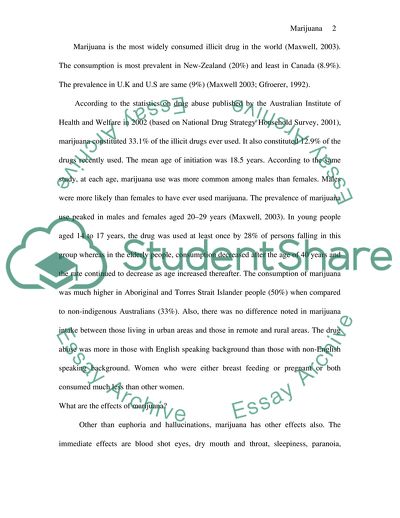Cite this document
(Is Marijuana a Dangerous Drug Coursework Example | Topics and Well Written Essays - 2000 words, n.d.)
Is Marijuana a Dangerous Drug Coursework Example | Topics and Well Written Essays - 2000 words. Retrieved from https://studentshare.org/psychology/1744427-psychology-view-is-marijuana-a-dangerous-drug
Is Marijuana a Dangerous Drug Coursework Example | Topics and Well Written Essays - 2000 words. Retrieved from https://studentshare.org/psychology/1744427-psychology-view-is-marijuana-a-dangerous-drug
(Is Marijuana a Dangerous Drug Coursework Example | Topics and Well Written Essays - 2000 Words)
Is Marijuana a Dangerous Drug Coursework Example | Topics and Well Written Essays - 2000 Words. https://studentshare.org/psychology/1744427-psychology-view-is-marijuana-a-dangerous-drug.
Is Marijuana a Dangerous Drug Coursework Example | Topics and Well Written Essays - 2000 Words. https://studentshare.org/psychology/1744427-psychology-view-is-marijuana-a-dangerous-drug.
“Is Marijuana a Dangerous Drug Coursework Example | Topics and Well Written Essays - 2000 Words”. https://studentshare.org/psychology/1744427-psychology-view-is-marijuana-a-dangerous-drug.


